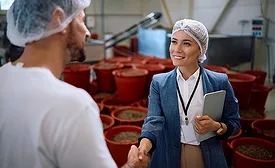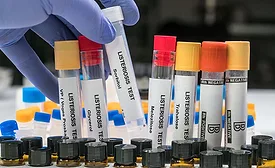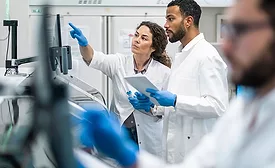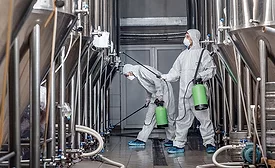Home » Publications » Food Safety Magazine
Our Publications
Please select a publication below.
Food Safety Magazine

December 2025/January 2026
Cover Story
Back to TopIn a global food and beverage industry under pressure from recalls, regulation, litigation, and consumer expectations, food safety is not just about staying compliant; it is about staying in business
Read More
Features
Back to TopModern Dairy Safety Concerns and Emerging Precision Fermentation for Dairy Foods and Ingredients
Developments in genetic technology have created a boom in the use and potential applications of precision fermentation
December 8, 2025
Footsteps and Forklifts: The Dance of the Production Floor
Food safety alert: things that move can take other things on unwanted journeys
December 8, 2025
A Food Industry Perspective on The Benefits and Barriers of WGS for Pathogen Source Tracking: The Sequel
Whole genome sequencing is gaining traction within the food industry, but advancements in technology, regulatory clarity, standardization in sequencing, and results interpretation are needed
Adrianne Klijn
Aurelien Maillet Ph.D.
Bala Jagadeesan
Caroline Barretto
Francois Bourdichon Ph.D.
Jerome Combrisson Ph.D.
Leen Baert
Martin Wiedmann Ph.D., D.V.M.
Anett Winkler
December 5, 2025
Columns
Back to TopUsing Risk Assessment to Interpret the Detection of Metals and Other Impurities in Foods
As consumers encounter more reports of detectable impurities in everyday foods, concern is likely to grow unless these findings are clearly communicated in the context of potential health risk
December 10, 2025
Beyond Borders: Food Fraud in Global Supply Chains
Conducting a food fraud vulnerability assessment helps identify potential weaknesses in the supply chain and assist in establishing effective controls to mitigate those risks
December 10, 2025
Ensuring Supplier FSMA Compliance through Supplier Preventive Controls
Supplier preventive controls are a key element of food safety assurance in the end-to-end supply chain of food manufacturing to retail foodservice and sales
December 10, 2025
The Signal to Start: How the FDA CORE Signals and Surveillance Team Evaluates and Identifies Foodborne Illness Outbreaks
Several tools and data sources are used in signal detection to evaluate genetic and epidemiologic information linked to foodborne outbreak investigations
Ashley Grant M.P.H.
Tyann Blessington Ph.D., M.S., M.P.H.
Daniela Schoelen Ph.D., M.P.H.
Stelios Viazis Ph.D.
Cary Chen Parker M.P.H.
Anders Evenson
Stuart L. Cantor PhD
Jennifer Beal M.P.H
December 12, 2025
What Food Safety KPIs Say About Food Safety Culture—Part 1
Part 1 of this column series discusses the results of a survey of more than 170 food processors regarding their views on food safety culture
December 15, 2025
How QA and Frontline Leaders Assess Food Safety Skills
High-performing organizations go beyond compliance to ensure continuous skill development and a leadership-driven food safety culture
December 15, 2025
Stronger Together: A National System for Regulatory and Laboratory Food Safety Training Foundations and Context
The Regulatory and Laboratory Training System (RLTS) is designed to make training simpler, faster, and more consistent
December 11, 2025
Safe Chemical Handling and Storage
Every food processing facility must properly develop, document, implement, and maintain a chemical program
December 12, 2025
Never miss the latest news and trends driving the food safety industry
eNewsletter | Website | eMagazine
JOIN TODAY!Copyright ©2025. All Rights Reserved BNP Media.
Design, CMS, Hosting & Web Development :: ePublishing














